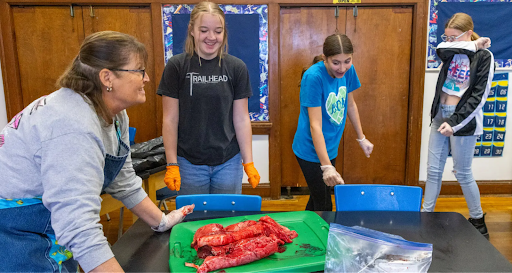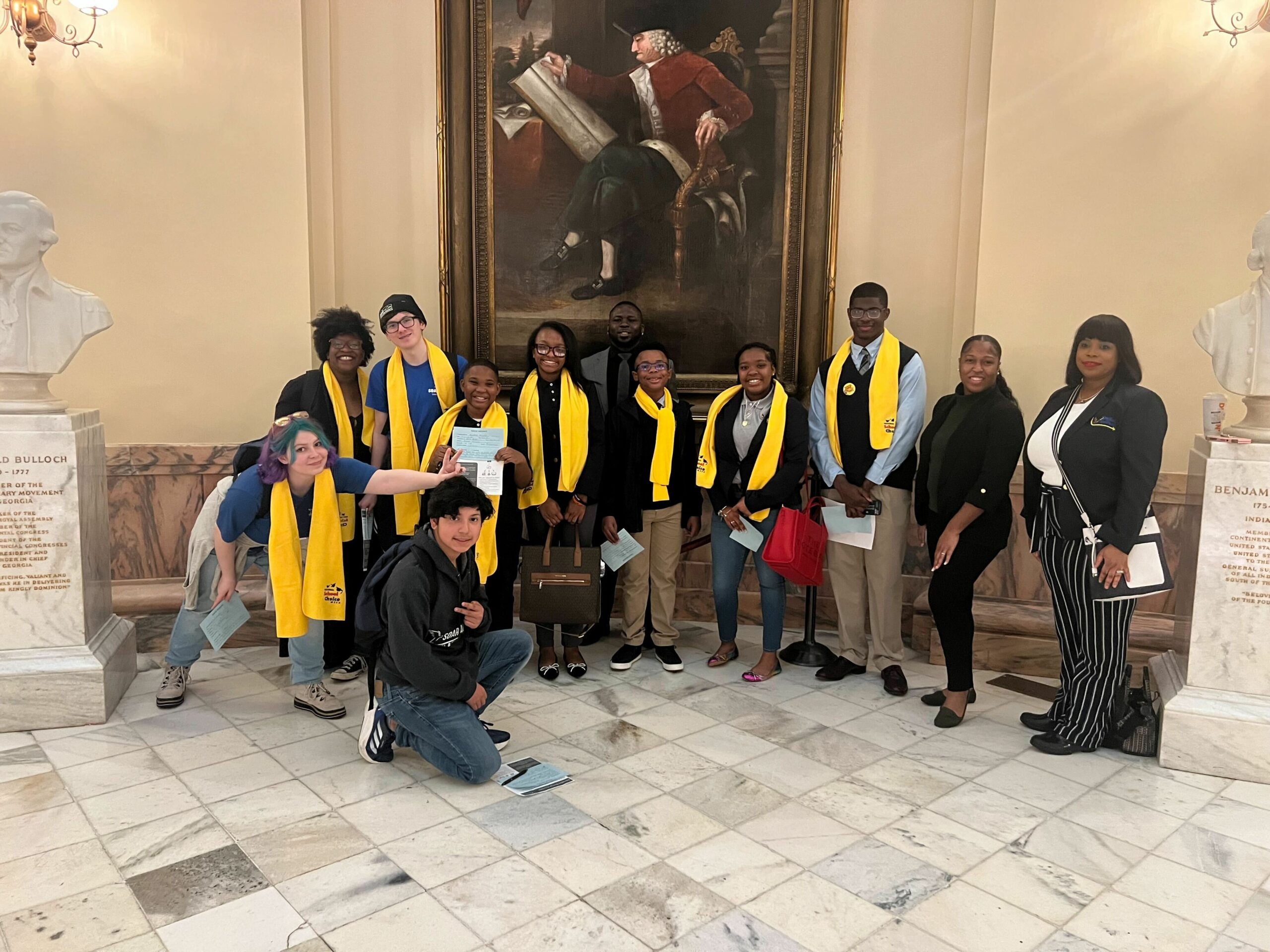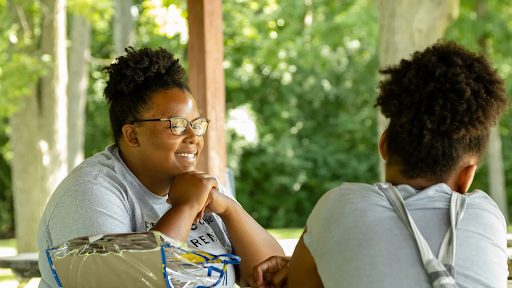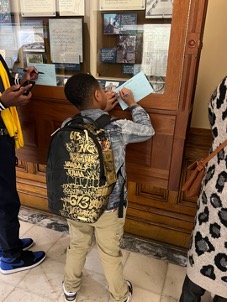Jump to: Top Tasks | From the Field | Key Resources | Moments of Resilience
It is week 180 of our new reality and we are thinking about what lessons we should take away from pandemic-era experiments with ed tech and online learning.
“In early 2020, as the coronavirus spread, schools around the world abruptly halted in-person education. To many governments and parents, moving classes online seemed the obvious stopgap solution,” Natasha Singer writes in The New York Times. “Now a report from UNESCO, the United Nations’ educational and cultural organization, says that overreliance on remote learning technology during the pandemic led to ‘staggering’ education inequality around the world. It was, according to a 655-page report that UNESCO released on Wednesday, a worldwide ‘ed-tech tragedy’ … The UNESCO researchers recommended that education officials prioritize in-person instruction with teachers, not online platforms, as the primary driver of student learning.”
SUBSCRIBE
It is an important reminder that technology can be a force for good in education but it can also be a step backwards. That’s something that matters not only in our preparations for the next pandemic but also in the choices we make this year on the role of smartphones in schools and the new challenges and opportunities of AI.
Last week, we opened the doors for a conversation on high school by highlighting an innovative district embracing a world of open and connected learning and a promising new initiative in Colorado to invest in more models that reimagine high school. This week we step back to think about the end goal we are all working towards and spotlight upcoming innovations in measurement.
TOP TASKS
Advocate toward your highest ideals
Last week, 50CAN CEO Marc Porter Magee joined The Martin Luther King, Jr. Center for Nonviolent Social Change for a panel discussion on the idea of the Beloved Community in education.
For Dr. King, the “Beloved Community” was the ultimate goal all advocates should be working towards. In 1956, he described it this way: “the end is reconciliation; the end is redemption; the end is the creation of the Beloved Community. It is this type of spirit and this type of love that can transform opponents into friends. It is this type of understanding goodwill that will transform the deep gloom of the old age into the exuberant gladness of the new age. It is this love which will bring about miracles in the hearts of men.”
It is a vision of a society that has ended poverty, hunger and homelessness. A society that has replaced discrimination with a spirit of inclusion and belonging, where love and trust have overcome fear and hatred and peace has won out over war and violence. That starts with a thriving education system that helps all children become the adults they were meant to be.
In the discussion, moderated by Jeff Johnson, Marc was joined by Baruti Kafele and Carrie Billy as they explored what a path forward can look like for an education system facing historic challenges. Johnson asked the group, “Where are the areas for reform that are most ripe for this moment?”
“When we look at what needs to be done for kids right now, one thing we have concluded is that all of the challenges that have built up over the pandemic are going to be impossible for us to tackle if we only think about getting back to normal,” Marc shared. “Our big mantra is that we have to believe in better. Some of that is the work we do is in schools, but we also have to think bigger about what else we are making available for students.”
This means aiming higher for an education system where you can choose from a variety of personalized, individualized choices of schooling; be taught by dedicated, diverse educators who believe in you and see your potential; receive equitable funding that overcomes historical injustices; and have access to all the opportunities outside of school that we know make a difference from tutoring to wellness to summer learning to internships, apprenticeships, college credit and more.
THE TASK OF THE WEEK IS
Modernize our systems of recognizing learning and mastery
For the past hundred years, the Carnegie unit has been what 74 Million reporter Beth Hawkins calls, “the bedrock currency of the education economy.” Now, Carnegie Foundation President Tim Knowles is spearheading an effort, now in a pilot stage, to sunset the system and replace it with a competency-based form of assessment and credentialing.
“If we believe that learning, wherever it takes place, is important, then in order for that to take root at scale, we need to persuade parents first that the learning their young people are experiencing outside the schoolhouse is valuable and is legible to the postsecondary sector if you’re applying to college and legible to employers if you’re going more directly into the workforce,” Knowles told The 74. “Everybody intuitively knows there’s enormous amounts of learning there. We need tools that can validate that learning.”
In Knowles’ estimation, the unsaid assumption behind an education system crafted around Carnegie units is that time spent in classrooms equates with learning. Based on what he was seeing, however, both in school buildings and in languishing datasets of student outcomes, that assumption simply wasn’t holding true.
Knowles argues that new systems of recognizing learning will lead to greater innovation in the menu of educational experiences that families will be able to select, resulting in deeper engagement and helping to solve the growing crisis of chronic absenteeism: “Teenagers have already spoken. We know they’re not engaged. There have been some systems around the country that have made marked improvements in high school completion, but there are many where 50, 60 or 70% of students are biding their time. Getting through. If we’re losing 30 or 40% of our young people before they’ve even had a shot, then we’ve got to take a step back and ask what might work better, what we need to do differently.”
For advocates who support this kind of vision for the future of learning, it’s a reminder that its emergence necessitates not only more options and opportunities for kids, but the educational infrastructure to make smart choices.
THE TASK OF THE WEEK IS
FROM THE FIELD
In the face of lagging student outcomes and high chronic absenteeism rates, Interim ConnCAN Executive Director Hamish MacPhail told the CT Mirror in an interview, “I think that we continuously need to evaluate in Connecticut how we help support districts to improve, and what the menu of options that we have is from a state level and also from a district level that we can utilize to help catalyze improvement. I respect the work that the state department is doing on it, but I know that the pace of change needs to continue to accelerate if we’re going to ever actually close persistent opportunity gaps, because at this pace of change, it’s going to take generations — if at all.”
A new interview from Curriculum HQ featured NewMexicoKidsCAN Executive Director Amanda Aragon, who shared more information on her team’s Literacy Action Center, which links passionate parents to resources and actions they can take to accelerate the pace of change.
Key Resources
The Economist reports on new research that finds that schools are the least economically integrated institutions in the United States.
Tim Daly writes for Fordham Institute that “chronic absenteeism has become a crisis.”
FutureEd’s Liz Cohen has the rundown of how districts will be able to continue to finance tutoring programs through federal dollars even after the approaching fiscal cliff.
Writing for Brookings, Douglas N. Harris explores myths and misconceptions about the impact of Covid-19 on education and argues that the drop in test scores likely underestimates the loss of learning.
New America released the seventh edition of its Varying Degrees project, which uses interviews with Americans ages 18 and older to better understand their perspectives on education after high school.
The Urban Institute published a new report on the characteristics of successful post-secondary CTE programs.
New research by Walter Ecton of Florida State University finds strong support among parents for more CTE in schools. The most compelling argument for CTE? “Framing CTE around its potential to prepare students for in-demand jobs in the local area.”
Moment of Resilience
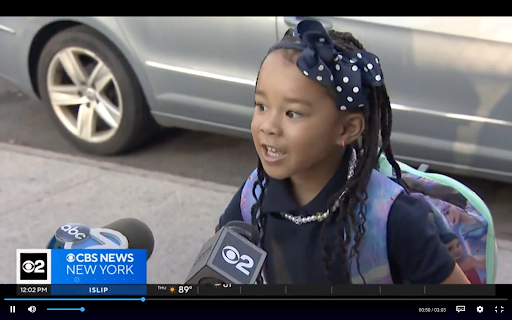
“I love it! I’m going to go to school today!” exclaimed 5-year-old Deseven Pastel to a CBS News Reporter as she made her way into New York City’s PS 121 for her first day of Kindergarten. The nation’s largest school district returned for a new year in the midst of a blistering heat wave and the looming specter of a bus driver strike, but that couldn’t contain the excitement of the country’s newest K-12 student.



